Feature
Learning About Coastal Zone Plants—Integrating Formal and Informal Teaching and Learning Practices
Connected Science Learning September–October 2022 (Volume 4, Issue 5)
By M. Alexandra Abreu Lima and Lia Vasconcelos
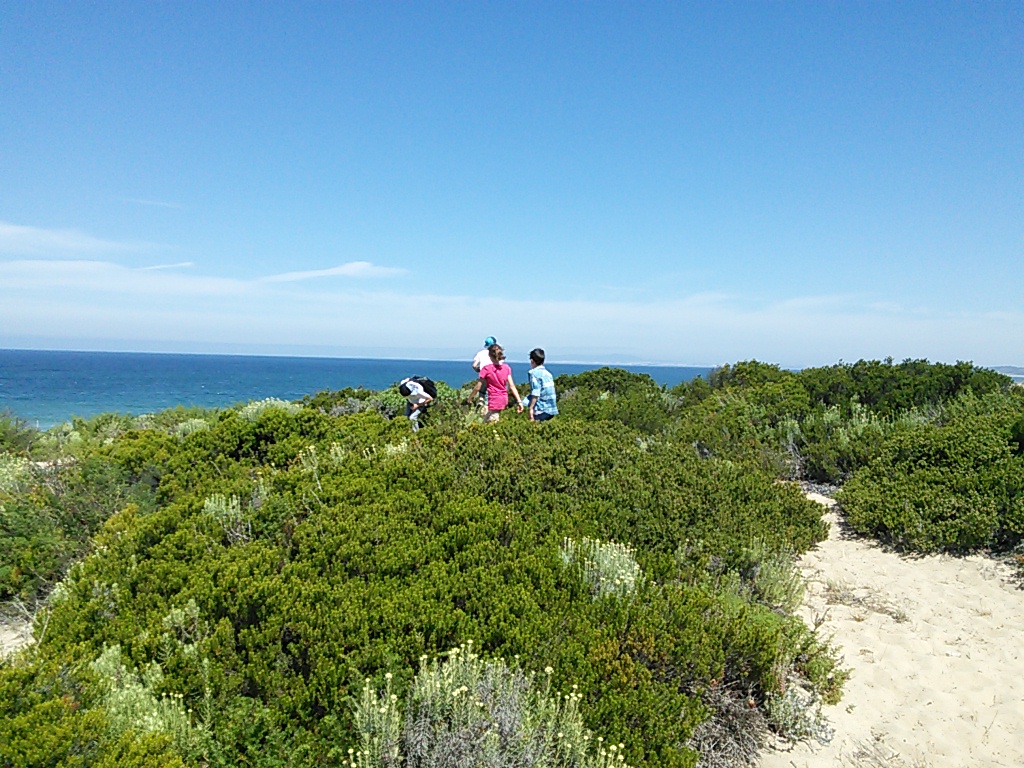
An understanding of science is essential if citizens are to make informed decisions concerning their lifestyles and life on Earth. Students should have opportunities to carry out observations in nature (with data collection and interpretation) as there are benefits when they are involved in the learning process instead of just receiving information transmitted during a lesson (Uno 2009). More recently, according to Hiatt et al. (2021) students’ engagement in authentic research increases student knowledge, develops STEM skills (such as data analysis and scientific communication) and builds community. These authors highlight the need to create authentic research opportunities in plant biology for pre-college students as undergraduates were found to be less aware of or interested in botanical compared to zoological topics (Uno 2007) (cit. Ward, Clarke, and Horton 2014).
Educational projects about plants can bridge formal education in the classroom and informal/outdoor learning. This article presents an ongoing plant-based education project, developed within the context of a research center that promotes half-day outdoor visits to coastal dune habitats for students ages 7–11 years old.
Why Education About Coastal Zones Matters
Coastal habitats, in which it is possible to observe endemic plants (i.e., plants that live in a certain region and nowhere else on Earth), are legacies of unique evolutionary histories and are therefore important for plant biology education and conservation. Unfortunately, some endemic plants in coastal zones are threatened due to one or more of the following factors, which together have a negative impact on biodiversity: habitat fragmentation, presence of invasive species, and climate change. Climate change impacts, for example, have been felt all over the world with substantial damage to dune ecosystems in coastal areas caused by storms, heat waves, and coastal forest fires. Therefore, awareness-raising initiatives about biological resources of coastal zones is relevant due to
- the current biodiversity crisis and existing threats (e.g., habitat fragmentation, invasive species),
- the growing trend of the younger generation to be disconnected from nature, and
- the growing lack of knowledge about biodiversity value and the importance of conservation efforts.
Coastal zones – a land-sea interface with plant biodiversity worth knowing
Coastal areas are home to some of the most beautiful places on Earth; they are highly dynamic and also some of the most altered ones. It is estimated that approximately 40% of the world population lives within a radius of 62 miles from the coast (Martínez et al. 2007, cit. Ward, Megonigal, Bond-Lamberty et al. 2020). According to these authors, the close links between the coastal interface and human societies are a major challenge for the sustainable management of services and resources provided by coastal ecosystems, especially when urban development and human populations along the coast are expected to keep increasing. This issue is highly relevant given the current context of climate change, which is leading societies to assess coastal vulnerability associated with rising mean sea levels and floods caused by extreme events
Dune habitats – rich in biodiversity but at risk
Dune formation is a dynamic process that occurs only in the presence of three elements: sand, wind, and plants. The sand deposited by the sea on the beach, after drying, is pushed inland by the wind and when it hits the plants that exist there, it is retained in a mound. These small piles of sand with plants will grow, which allows other plants that settle there to capture more sand brought in by the wind.
Though plants are an essential part in coastal dune formation, not all plants can live in these areas because dune habitats have poor conditions to retain water and are exposed to strong wind, high salinity, and extreme light and thermal amplitudes. Plants that live in dunes are well adapted to these difficult conditions, and some of them have adapted so well to these environmental conditions that they can be found only in coastal areas.
Although dune habitats can be rich in terms of biodiversity, they are also vulnerable to destruction caused by one or more factors, such as excessive trampling, existence of tracks for all-terrain vehicles, roads and house construction, and sand extraction for civil construction. Globally, sandy beaches occupy more than a third of the global coast and have a high socioeconomic value linked to tourism, leisure, and ecosystem services (Vousdoukas et al. 2020). According to recent reports, these authors hold the view that a substantial proportion of the world's sandy coast is already experiencing erosion, and this situation could be worsened by climate change.
Therefore, young peoples’ awareness about coastal vegetation roles in dune formation and as a natural barrier against erosion is increasingly relevant. Additionally, awareness-raising initiatives about coastal vegetation should also highlight its value in terms of biodiversity richness. For instance, it is known that for some populations living in coastal zones around the world, wild plants that produce edible wild fruit are an important source of minerals and vitamins, and can play an important role in diet. Due to this nutritional importance, plant species with wild fruits are of great interest to farmers and plant-breeding researchers. These plants are also an excellent resource for science and botany educational projects that bridge formal education in the classroom and informal/outdoor learning.
Project Description
This article describes an ongoing collaborative education project about a coastal plant. Project outdoor visit initiatives are coordinated by an outside educator associated with the research center who invites teachers from schools located in the vicinity of coastal zones to participate. The first contact is established by phone, followed by an e-mail with a brief description of project goals and planned initiatives. For those teachers who enroll in the project, initiatives are planned and scheduled according to weather conditions and seasonal plant development (e.g., fruit formation). Oftentimes schools are located close enough to the coastal habitats for students to walk to sites; in other cases, teachers are responsible to provide the required transportation.
In addition to partnerships established between the research center and invited schools, local non-governmental organizations (NGOs) can also become partners to focus, for example, on necessary environmental actions such as invasive alien species removal or endemic plant reintroduction.
Each half-day outdoor session is led by the outside educator in collaboration with one or two teachers from the enrolled school. The outside educator begins each session with a brief oral introduction of endemic and invasive plant species concepts, and students are provided with magnifying glasses, activity worksheets, and pencils to explore the coastal habitat and register their observations, with help from their teachers as needed. A questionnaire to assess students’ knowledge about the plant species they learned about is provided to teachers, who will ask students to complete it after the visit, back in the classroom.
The main project goals are to help transform plant biology teaching and learning practices and to empower youth to engage in plant conservation activities. An important message for students to receive through participation in this program is that the unprecedented rate at which biodiversity loss is taking place is simply too rapid, too large, and too overwhelming for youth not to act. Therefore, for participating students, the project aims to
- improve knowledge about endemic plant species (e.g., white crowberry) as part of plant coastal biodiversity richness to be protected,
- provide an opportunity to explore nature,
- develop a deeper understanding of coastal plant biodiversity issues, and
- encourage engagement in recovery actions of declining coastal plant populations.
Since 2016 student questionnaires have revealed that the endemic case-study plant (white crowberry, Corema album (L.) D. Don) is unknown to 75–95% of students prior to participation in the project.
Among the four dune habitats that students can visit through this project, one is experiencing a declining white crowberry plant population. A conservation activity began in 2017 with scientists collaborating on collecting stem cuttings, rooting them, and—once roots have grown—working with students to reintroduce the plant to the coastal zone. White crowberry plant is a dioecious shrub whose female plants bear small edible fruits, white in color (Figure 1).
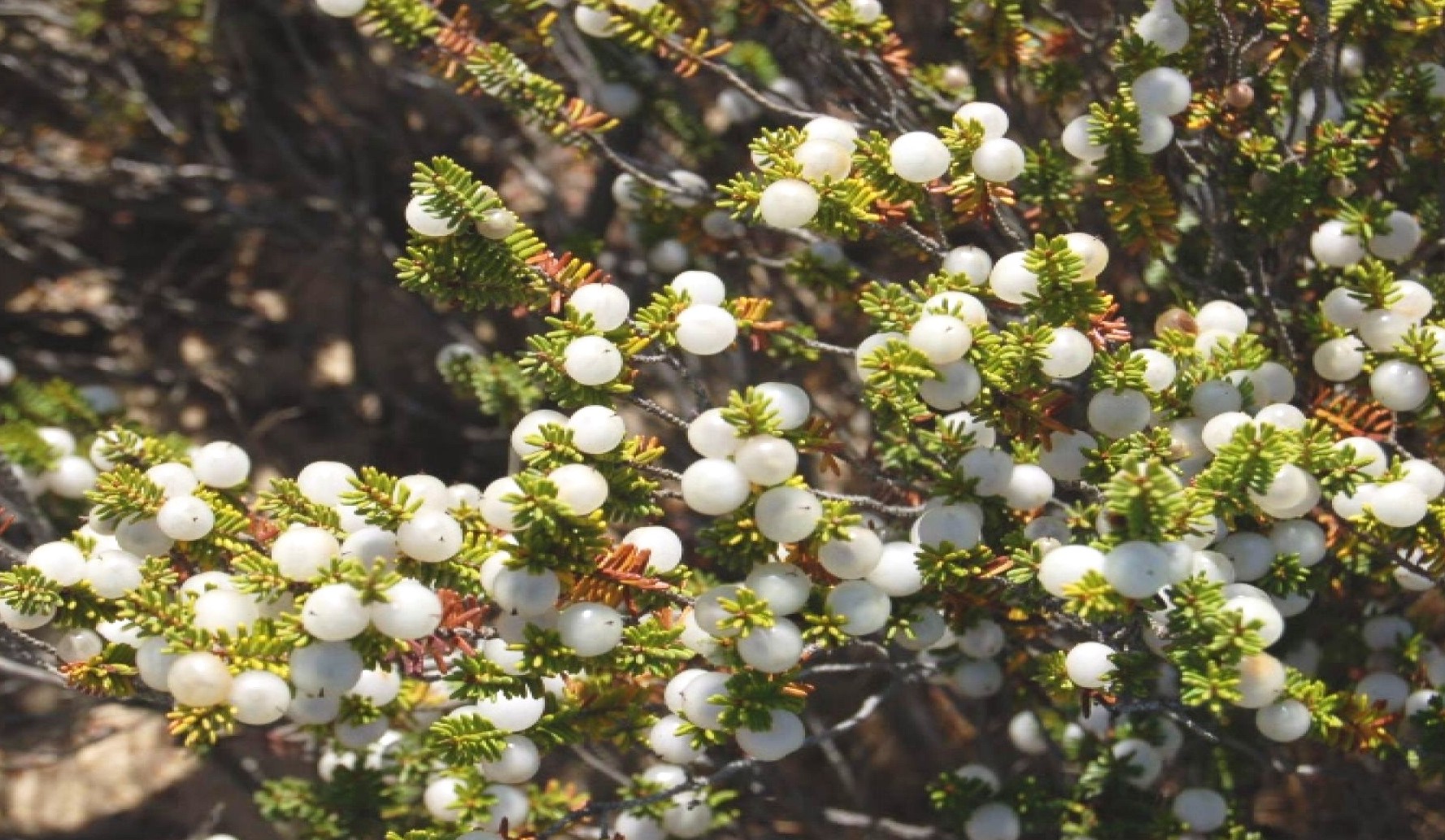
White crowberry belongs to the genus Corema (L.), with only two species; C. conradii (Torr.) Torr. ex Loud., (common name: Broom crowberry) endemic in the Atlantic coastal zones of the United States (Maine, Massachusetts, New Jersey, New York) and Canada (New Brunswick, Nova Scotia, Prince Edward I., Québec) and C. album (L.) D. Don, which is endemic to the Atlantic coast of the Iberian Peninsula. The subspecies C. album (L.) D. Don: - C. album subsp. azoricum Pinto da Silva can be found in the Azores Islands.
Project Methodology
The project methodology encompasses three different activities: Outdoor Visit, Botany and Art, and Conservation.
Outdoor visit
In the Outdoor Visit activity, students visit dune habitats (Figure 2) and observe endemic plant species (e.g., white crowberries) and other plants, as well as collect small plant branches for the mini-herbarium they will create. During the visit, students become aware of worldwide geographical distribution of the endemic case-study plant and learn about endemic and invasive plants (non-native species that can quickly outcompete native plants).
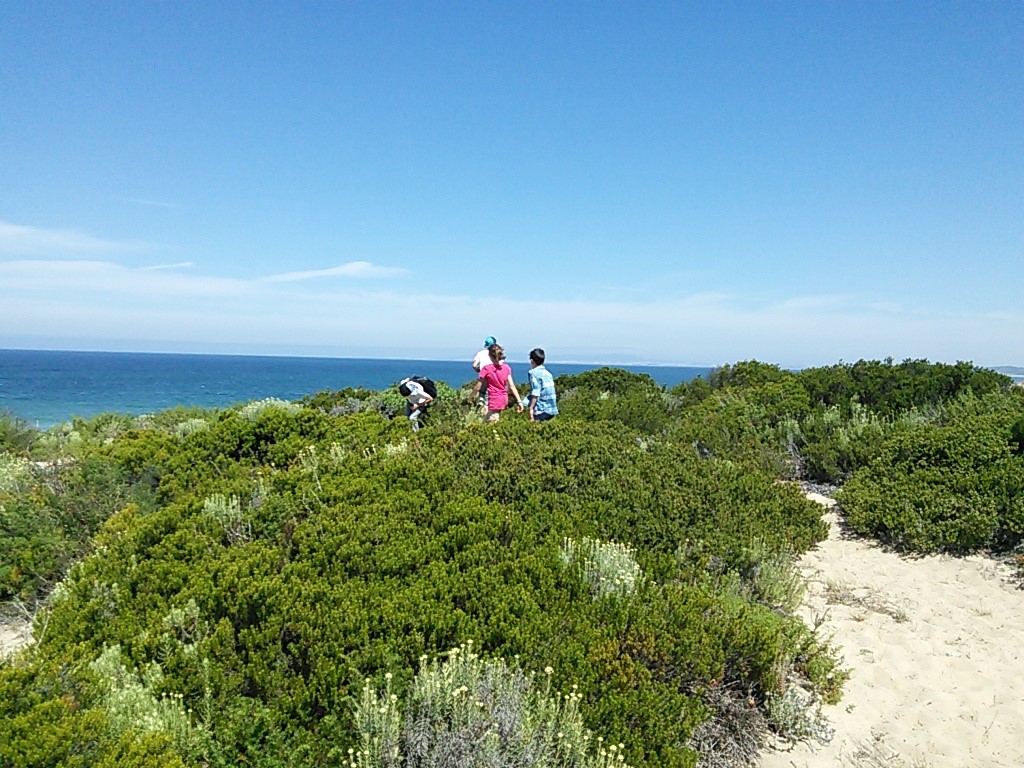
During the visit, students complete an activity worksheet, which includes writing a brief description of the place and a record of what they feel (e.g., using senses such as smell, vision, etc.). Following the visits, students reply to a brief questionnaire to assess their knowledge about the plant species visited and what pleased them most.
Botany and art
In the Botany and Art activity, completed back at school, students draw the landscape and/or plants they have observed (Figure 3). This activity worksheet presents an herbarium specimen image of the endemic plant case study species, previously collected in the same coastal area that is visited during the project (in a “Place Based Education – PBE” approach). Students learn that the extirpation of an endemic plant species in a certain area (i.e., their disappearance at a local level, although the species survives elsewhere) can be deduced through a comparative analysis of existing records in herbarium collections and their current absence in nature. At the local level, plants that currently only exist in herbaria records, and no longer exist in nature, are evidence of the extirpation process and should be an alert to prevent this from happening in future times in other places along coastal zones.
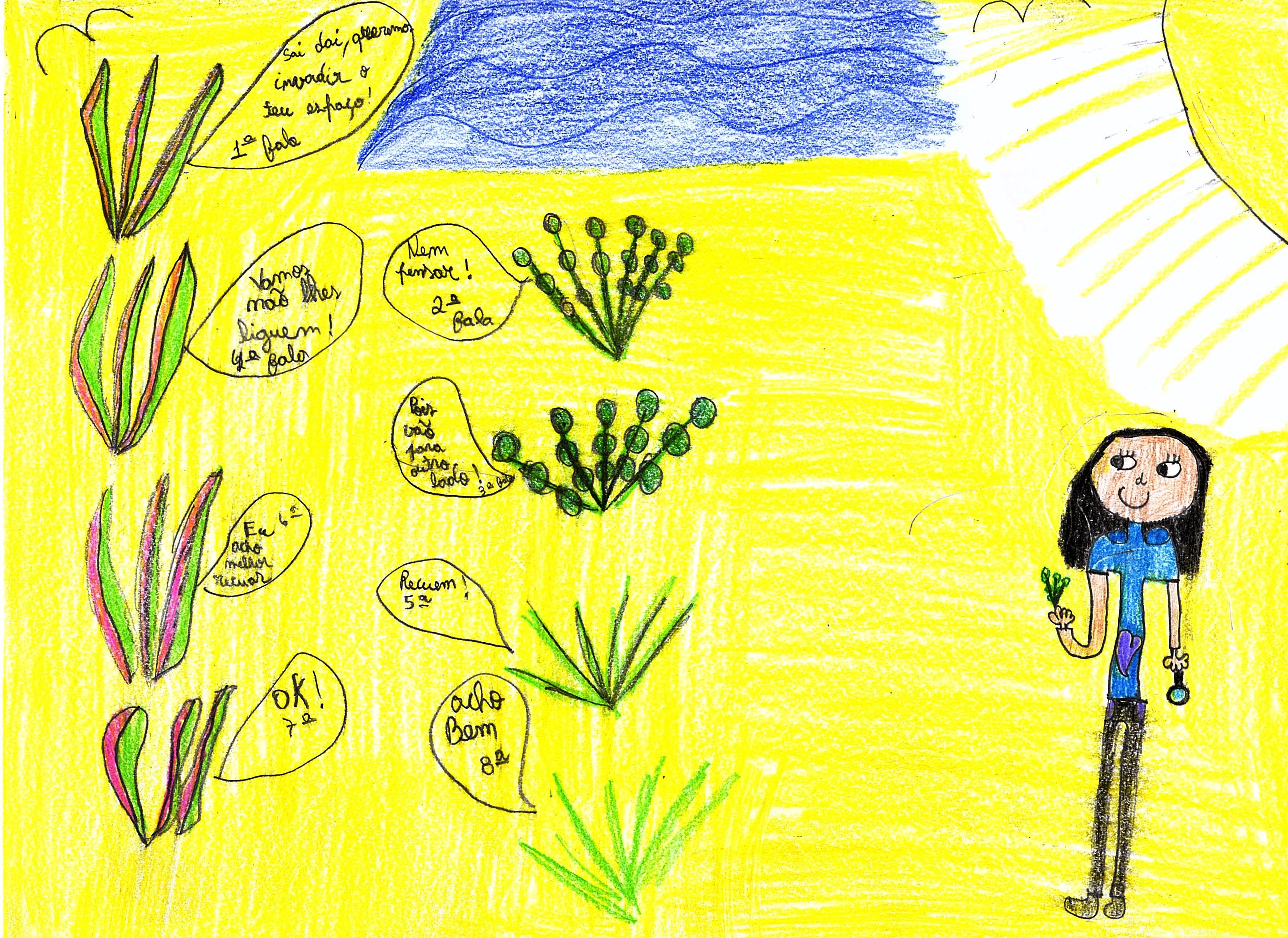
Conservation
Conservation activities are typically done in collaboration with scientists from local non-governmental and research organizations engaged in this education project partnership. Whenever an endemic plant population is identified as in decline, schools are invited to participate in conservation initiatives, with students becoming the guardians of the plants to be reintroduced. For each specific conservation activity, participating plant scientists evaluate the best adequate practices of propagation method(s) to obtain more plants for reintroduction initiatives (e.g., asexual or sexual propagation). According to technical requirements of the chosen propagation method, and depending on available school equipment, some conservation activities may require the use of greenhouses at research facilities, while others can be completed at schools. In the cases where research facilities are used, students learn about the propagation processes being used, with deeper engagement occurring later in the project, at the phase of plant reintroduction to the coastal zone. In all conservation activities, students will assess the future growth and development of the reintroduced plants (Figure 4).
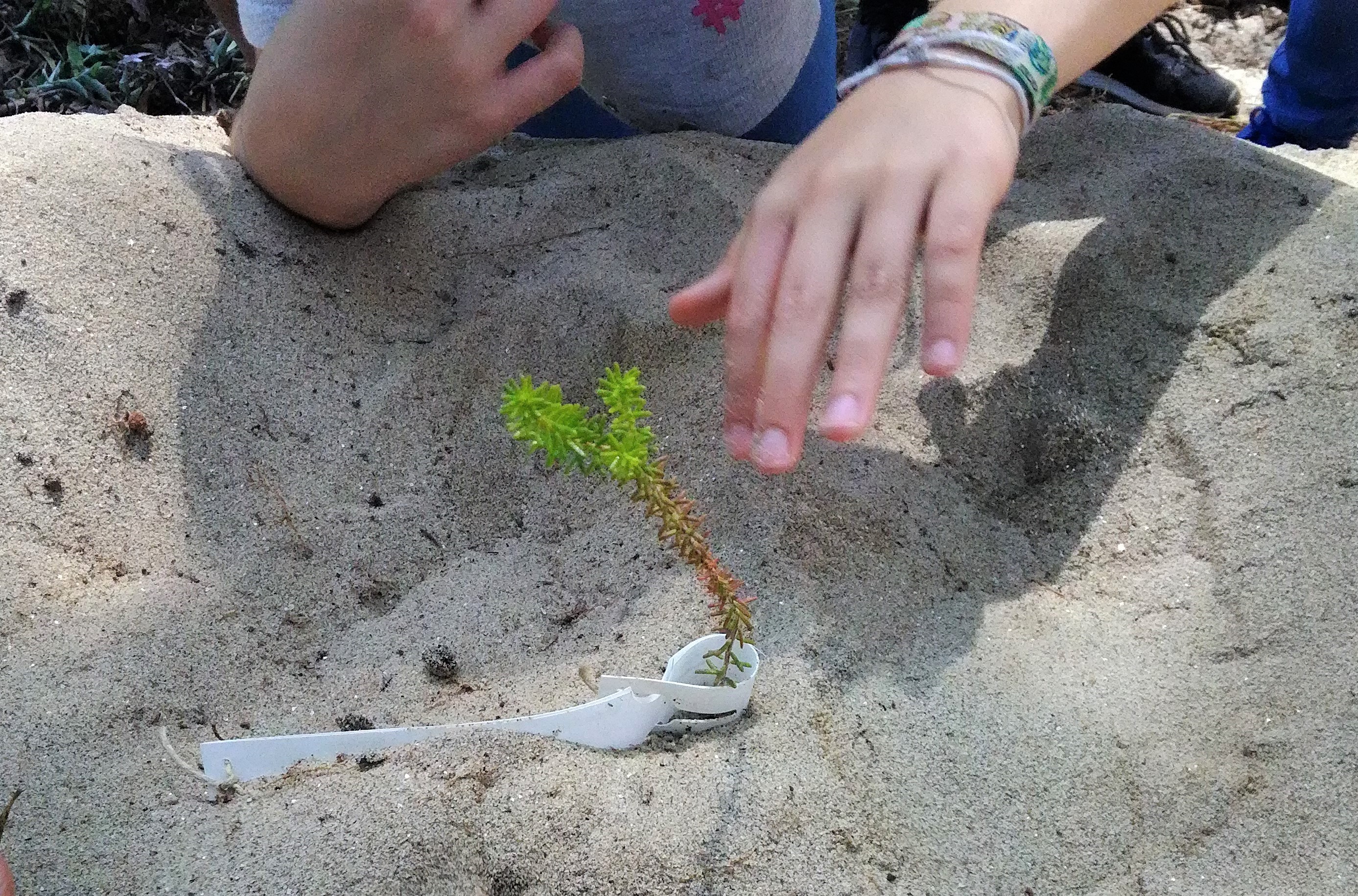
This reintroduction can be planned to also engage students in complementary active management measures, such as the eradication of invasive alien plant species. Mid- and longterm monitoring should be planned to ensure in situ sustainability of conservation actions, with the engagement of all stakeholders—scientists and students.
Project Impacts
The project initiatives have enriched school curricula and provided an opportunity for students to better appreciate nature and to increase their knowledge about coastal plant biodiversity. Students also gain a deeper understanding about the challenges faced by coastal areas, enabling them to act toward the conservation of a declining endemic coastal plant population.
Impacts for students
Students' enthusiasm for exploring nature
Students' enthusiasm for exploring dune habitats and discovering new plants was evident in all visits and was expressed in the answers given to the question about what pleased them most, such as
“What pleased me most was to know new plants and then making a herbarium.”
“What pleased me most was having the freedom to explore the dunes.”
“I enjoyed the landscape and the nature and it is good to know that there are people who care about life on Earth.”
“To discover new plant species.”
“I have particularly enjoyed to see the white crowberry plants, to taste their fruits, and see them with the magnifying glass.”
Students’ appreciation of nature
At the outdoor visit setting, students filled out an activity sheet, in which they described the place and recorded what they felt. Among several answers, which illustrate the connection between “Feeling and Knowing,” the following ones stand out:
“The place was big, with lots of plant species, it was nice and very beautiful.”
“(…) the sounds were magnificent, it was the sound of the sea, the smell was the smell of nature, the view was beautiful.”
“The place was full of hills, with sounds of various animals and smells of another world.”
“There was the smell of the sea, a beautiful landscape with wonderful flowers and plants.”
“In the dunes there are sounds of some animals such as crickets, grasshoppers… And there is the smell of the sea and the smell of plants.”
Students' degree of knowledge about the endemic species
Since 2016, student questionnaires have revealed that the endemic plant C. album is unknown for most engaged students prior to program participation, with percentage values ranging from 75% to 95% and an average of 86% over a span of five years (n = 388). Therefore, students’ participation in this project allows better knowledge about a particular endemic plant species and other coastal plants in their local community.
Students’ empowerment in conservation
Students’ participation in plant reintroduction has been a success, as the total 44 reintroduced plants (30 in 2018/19 and 14 in 2021) are well adapted (with female plants already bearing some fruits) and are a positive action to halt this plant population extirpation. Students’ motivation in this activity is evidenced in the following student group records:
Group 1 work record: After 6 months, it was time to go and observe the characteristics of our white crowberry plant, we photographed it from different angles. It measures 33 cm, it is the largest, it is a female plant but still without fruit. Conclusion: this work was very interesting because we were able to understand what a white crowberry plant is, its characteristics and development.
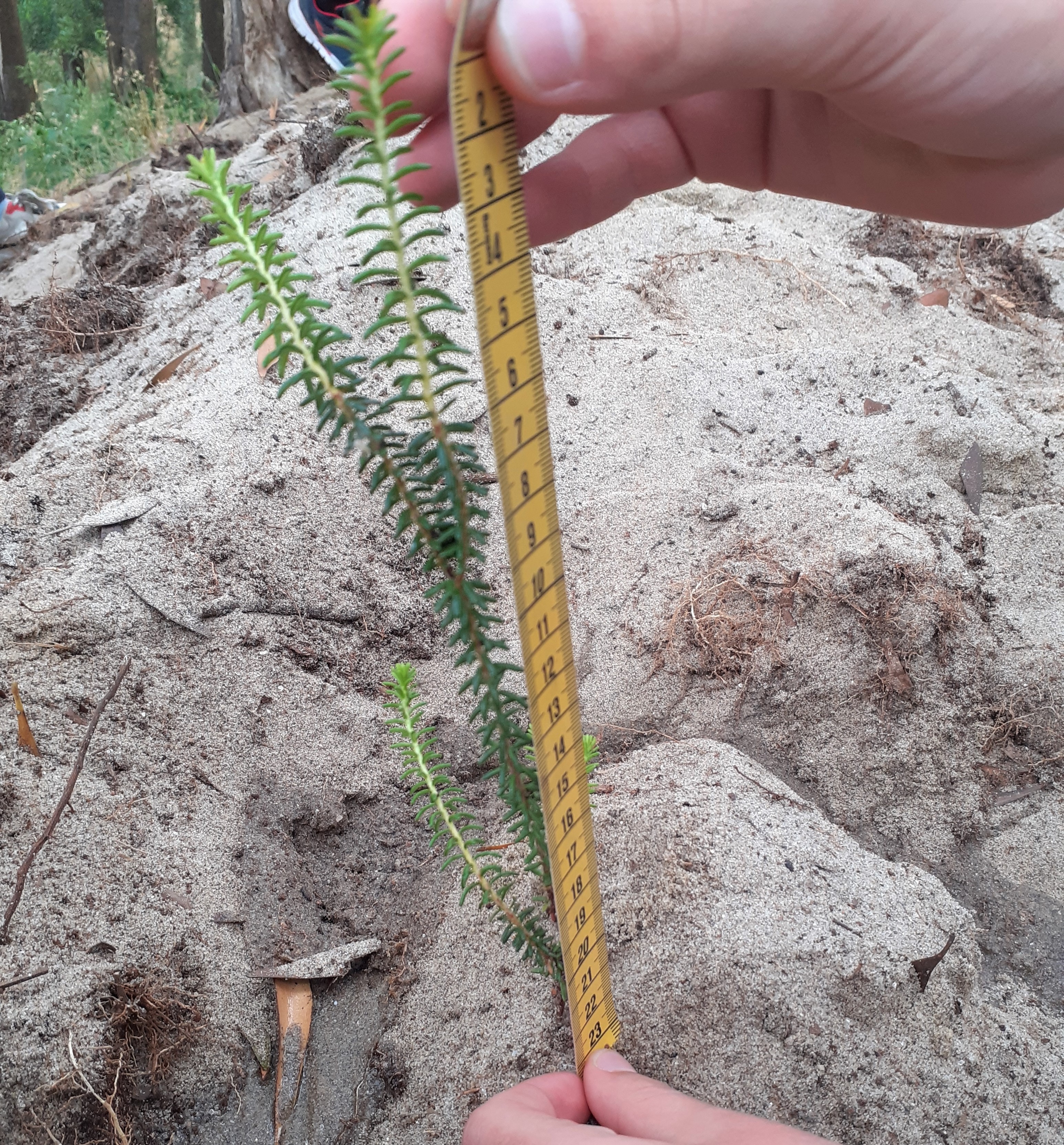
Group 2 work record: In the first observation, our group's plant measured 24 cm. In this observation, in November 2018, we saw how white crowberry plants are fascinating. On 05/28/2019, we had a field class that, in our view, was very important for our learning. We were very pleased to know that our plant that once measured 24 cm has grown to 28 cm tall. Conclusion - it was an activity: (1) more enriching than a normal class; (2) it was a really funny class.
Impacts for teachers
A qualitative assessment by all engaged teachers in outdoor visits to coastal areas with white crowberry plants revealed that coastal dune habitats are good places for students’ contact with nature, a privileged space for science and botany teaching-learning that enriches and complements classroom learning, and awakens the curiosity of young people for nature. All teachers surveyed expressed the value and usefulness of outdoor visits for plant biology teaching-learning and for the motivation of students, aspects that are highlighted in the following testimonials:
- Third-Grade Teacher: This activity contributed to the teaching of science and botany as students are in contact with nature, namely with plants, developing their observation capacity and their interest in experiments and species conservation.
- Third-Grade Teacher: This visit was considered relevant in the teaching of science and botany as it went beyond a standardized class in which definitions, observations and contents only happen within the classroom, between four walls. Science education calls for much more than that, and close contact with Nature is urgent and necessary for learning to be truly meaningful.
- Fourth-Grade Teacher: It was an outdoor environment study class in which students learned to know new plant species, technical terms and it was an awakening for the realization of a small herbarium.
- Fifth-Grade Teacher: It was a very enriching visit insofar as it aroused students’ interest in natural spaces, improved the ability of observation and communication of observations made. It sparked interest in concepts of native and invasive species and the functions of dune flora in coastal habitats.
- Fifth-Grade Teacher: Field trips are very interesting activities for students and also important for them to realize that in science they can work in a diversified way.
Impacts for local communities
The inclusion of topics about the natural heritage and ecological issues of coastal zones in localities’ cultural event lists (e.g., Students Drawing Exhibitions) can inspire both participating students and citizens who see their exhibition to engage and act in biodiversity conservation. Such events can also be awareness-raising initiatives for more broad, general measures concerning coastal ecosystem conservation, such as how to avoid trampling on dune vegetation by using walkways and remove invasive species.
Challenges, Future Directions, and Opportunities
Conservation of endemic coastal plants is of utmost relevance due to present and future challenges coastal zones face in terms of biodiversity and habitat loss. Educational project initiatives, such as the one described in this article, are effective at demonstrating, educating, and raising awareness about what citizens can do to make a difference. The challenges, future directions, and opportunities we’ve identified through our initiative are briefly summarized in the following paragraphs.
Outdoor Visit activities can complement classroom teaching as they have the potential to enrich and enhance students' learning due to their emotional and motivating power. A future direction is to provide opportunities for students who live far from coastal zones to become involved in our initiatives to extend this impact.
The Botany and Art activity that results in exhibitions of student drawings held in public museums or other institutions constitutes a way to bridge school communities with society at large. In the future, we plan to organize—along with these exhibitions—discussions between visitors, students, scientists, and other stakeholders. These discussions will be an opportunity to collectively envision new solutions and options for coastal biodiversity issues. Another future direction is to encourage the production of itinerant exhibitions, reaching wider audiences.
For the Conservation activity, the project will continue to engage students visiting the coastal areas in assessment of adequate measures for conservation of declining white crowberry populations. A future direction for plant reintroduction to the wild will be to obtain more plants by seed germination propagation through a tested protocol to complement propagation from stem cuttings. These conservation activities are carried out with collaboration of researchers and local stakeholders (e.g., from local NGOs) in a participatory approach allowing for increased student participation and for school communities to connect with other society sectors such as scientific research or arts and culture. For each chosen endemic plant species case study, to make conservation activities most relevant, we recommend that planning should incorporate project partners (e.g., NGOs and research organization) to focus on their long-term conservation objectives.
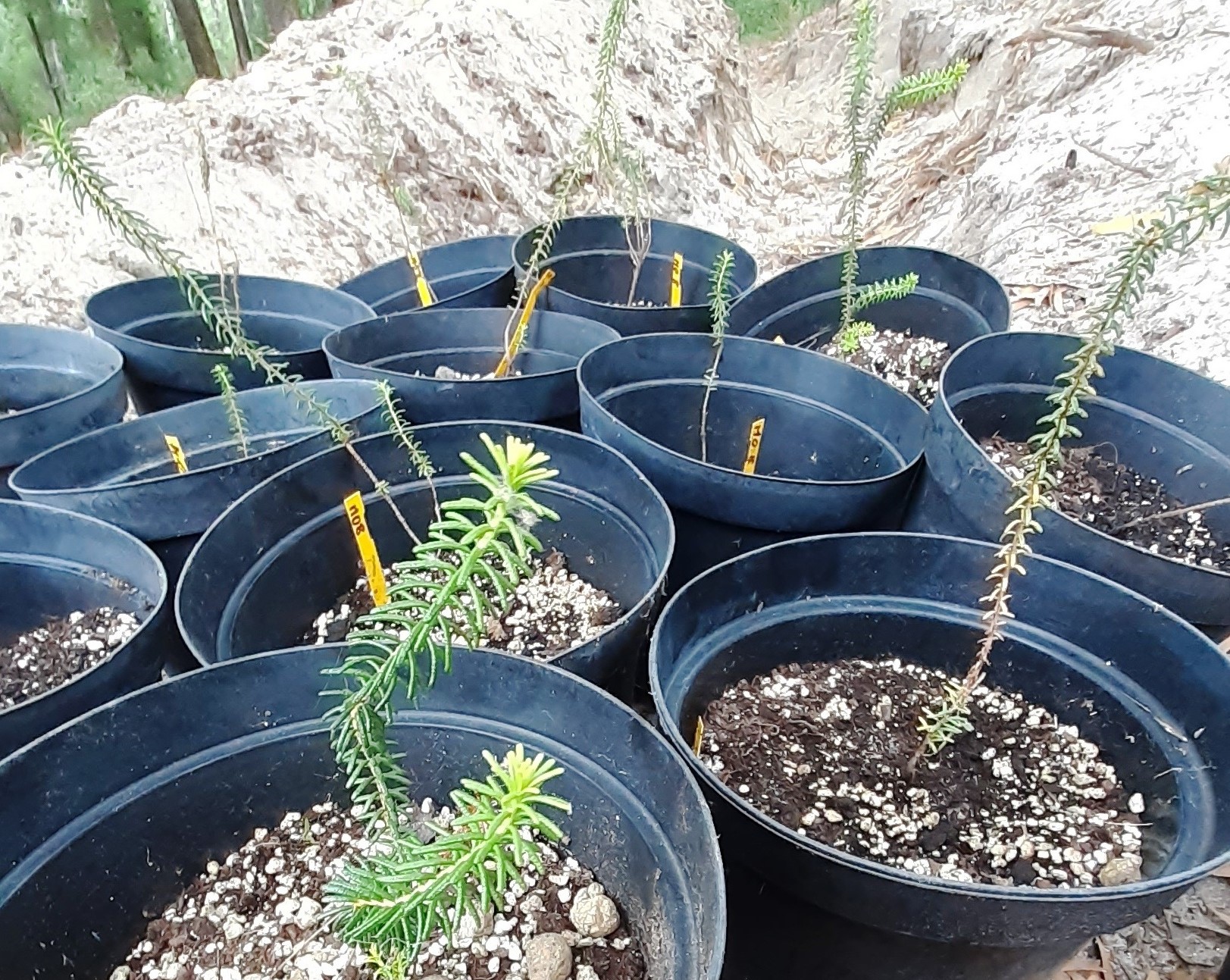
Project activities about biodiversity and habitat loss help students gain an understanding of the role of local to global policy making regarding these issues. Further, students learn about public participation processes and opportunities for citizens to have an informed voice. At the local level, awareness-raising projects about coastal biodiversity that engage students can be a way to better inform and empower them to engage in or advocate for ecosystem restoration. Successful outcomes from local initiatives can also be replicated at regional, national, or even international levels. This article contributes to the growing literature regarding how education is an essential component of plant conservation (Sharrock 2020) as well as for making connections between school communities, scientists, and other society stakeholders.
Recommendations
Learning and awareness-raising about coastal habitats plant biodiversity and the need to act for their conservation—in ways that engage students emotionally and intellectually—are important educational challenges to be addressed. This project provides evidence that student engagement in such initiatives helps them be protagonists, acting usefully in nature conservation and communicating what they’ve experienced to their local community.
Coastal habitats are an exciting space for students to explore nature and learn more about plant biodiversity in an authentic and meaningful way. Based on this project’s findings, it is recommended that other school communities consider developing initiatives about local plant biodiversity resources to foster youth’s engagement in ecosystem restoration with current and future relevance during the United Nations Decade on Ecosystem Restoration (2021–2030) (UN 2019).
M. Alexandra Abreu Lima is a Researcher at INIAV, I.P. (Oeiras Campus, Portugal) and a Collaborator Researcher in the Research Group Estuaries and Coastal zones at MARE-NOVA of ARNET (Aquatic Research Network) at Faculdade de Ciências e Tecnologia Universidade Nova de Lisboa, Caparica, Portugal. Lia T. Vasconcelos is a Researcher at MARE-NOVA of ARNET (Aquatic Research Network) and a Professor at NOVA School of Science and Technology - Departamento de Ciências e Engenharia do Ambiente, Faculdade de Ciências e Tecnologia, Universidade Nova de Lisboa - DCEA/FCTUNL, Caparica, Portugal.
Resource
Lima, M.A., and L. Vasconcelos. 2017. Emc2 Project “Exploring White Crowberry Coastal Habitats” Book of Activities. FCIÊNCIAS.ID Ed., Lisbon. ISBN: 978-989-99962-5-0.https://www.mare-centre.pt/sites/marecentre/files/31052017%20%20Emc%202%20%20Book%20of%20activities.pdf
The Emc2 project “Exploring White Crowberry Coastal Habitats” promotes outdoor learning activities about coastal flora richness. “Outdoor Visit” and “Botany and Art” activities focused on white crowberry—Corema album (L.) D. Don—highlight the value of endemic plants. This book contains several activity worksheets for future use by any interested organization and/or school.
Emc2 Project Link
https://www.mare-centre.pt/pt/sociedade/programas-educativos/emc2
citation: Lima, M.A.A., and L.T. Vasconcelos. 2022. Learning about coastal zone plants—Integrating formal and informal teaching and learning practices. Connected Science Learning 4 (5). https://www.nsta.org/connected-science-learning/connected-science-learning-september-october-2022/learning-about-coastal
Biology Climate Change Environmental Science Life Science STEM Informal Education


